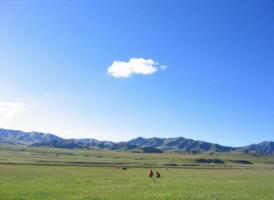Silk Route: The Way to Prosperity for India, China & Entire Asia
More than 1,600 years ago, a 65-year old Chinese monk named Fa Xian (Fa-Hien) made his maiden pilgrimage to India to look for Buddhist scriptures. The route along which he travelled was later called the Silk Road, and the route he chose to go back to China via the Indian Ocean was named the Maritime Silk Road.
The Silk Road embodies the spirit of peace, cooperation, openness, inclusiveness, mutual learning and hard work. President Xi Jinping of China brings the spirit of the ancient Silk Road up to date by calling for the joint development of an economic belt along the Silk Road and a Maritime Silk Road of the 21st century. These two initiatives of overland and maritime Silk Roads aim to seize the opportunity of further opening up of China, especially its western side, and to work with neighbouring countries to speed up the development of Asia.
The "Belt" and "Road" initiatives are inclusive because they are a banner of unity among nations and a commitment to cooperation. They will contribute to greater connectivity and complementarity among east Asia, central Asia, south Asia, southeast Asia and west Asia, and help to develop and improve our supply chain, industrial chain and value chain. It will, thus, bring pan-Asian and Eurasian regional cooperation to a new level.
Second, the initiatives help to boost infrastructure development and structural innovation, to improve business environment of the region, to facilitate an orderly and unimpeded flow of production factors and their efficient distribution to accelerate development of landlocked countries and the remote areas, to lower costs and barriers of trade and investment, and to drive greater reform and opening up by regional countries.
Third, the initiatives help to strengthen exchanges among people of different nations, regions, classes and religions, to explore the potential of the "soft" aspect of exchanges and cooperation, and to consolidate the foundation of friendship among people and contribute positively to peace and development in Asia.
Prime Minister Manmohan Singh responded positively to State Councillor Yang Jiechi of China when the latter invited India to take an active role in the process during his visit to India this February. Some of the existing projects of cooperation between our two countries, like the Bangladesh-China-India-Myanmar Economic Corridor and Chinese industrial parks in India, can be included in the cooperation.
India's Look East policy as well as the BIMSTEC Cooperation can also be integrated with the Belt and the Road initiatives. There need to be five links in the chain. The first is policy. We should strengthen policy coordination by making use of bilateral mechanisms such as China-India Strategic Economic Dialogue to increase the convergence of our strategy of development.
The second link is roads. We should explore the possibility of improving cross-border transportation infrastructure in the border areas without dispute to work for a transport network linking China and India, as well as linking east and south Asia.
The third link is trade and investment. China is ready to expand its investment in India and reduce our trade imbalance. We should push forward our consultations to result in the China-India regional trade agreement in due time. Meanwhile, efforts should be made to remove trade and investment barriers, to improve circulation and quality of the regional economy and make the regional cooperation "cake" even bigger.
The fourth "link" is currency. We can work for financial settlement in Chinese yuan and Indian rupee, encourage currency swap, strengthen banking cooperation and set up regional financial institutions for development to bring down transaction costs and enhance regional arrangement to fend off financial risks.
The fifth link is people. Besides existing people-to-people exchange mechanisms, we should continue to enhance exchanges, especially at the grassroots level, establish more sister cities and provide more facilities for people-to-people exchanges to promote friendship between China and India.
In the backdrop of further globalisation, we need to follow our ancestors' footsteps along the ancient Silk Road. For the benefit of our region, let us work together for common prosperity.














